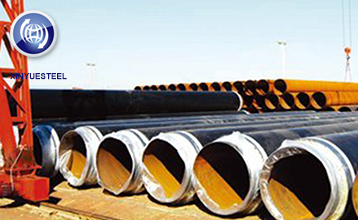Steel prices transition from rapid rise to high shocks
Apr. 27, 2021
After experiencing the rapid increase in the previous period, the recent increase in steel prices has not had enough momentum. Take steel billet as an example. After reaching a staged high of 5,060 yuan/ton in the early stage, the price began to fall, and it has now fallen to about 4950 yuan/ton, and the prices of other steel products have also experienced varying degrees of correction. The author believes that the main reasons for the recent drop in steel prices are as follows:
On the one hand, the excessively rapid increase in steel prices has attracted the attention of relevant government departments, including the Financial Stability and Development Commission of the State Council. The market’s fear of heights is strong, and the macroeconomic policy control expectations are superimposed. Some market participants cash out and leave the market ahead of schedule, causing volatility in the futures market, which in turn has dragged down the spot market.

On the other hand, under the influence of high steel prices, the downstream purchasing enthusiasm is low, and the transaction of high-priced resources in the market is blocked, and the transaction volume even halved in some areas in the south.
However, as far as the current market is concerned, the channel for steel prices to rise has not been blocked, and the price resilience is still strong. In this round of steel prices falling behind, the spot prices of individual steel products once again "recovered the ground lost in the previous period" by a small increase, and the rebar futures prices also returned to above 5,100 yuan/ton, opening a high-level volatility adjustment market. The author predicts that there is limited room for steel prices to fall in the short term, and more will continue to rise, but the rate of increase will be relatively slower than in the previous period. The main reasons for making this judgment are as follows:
First of all, the cost of steel has risen. After multiple rounds of adjustments, coking companies started a new round of adjustments again, with an increase ranging from 100 yuan/ton to 200 yuan/ton. The price of coke ended the previous weakness and began to gradually strengthen.
Secondly, iron ore prices have continued their upward trend recently. On April 16, the spot price of imported iron ore ports increased. The transaction price of PB powder was 1187 yuan/ton, an increase of 29 yuan/ton from the previous day; the transaction price of Jinbuba powder was 1140 yuan/ton, compared with the previous day Increased 20 yuan/ton. The prices of raw materials and fuels have steadily strengthened, and the cost of steel has risen, which further blocked the downward space of steel prices.
Finally, my country’s first quarter economic data is eye-catching, and investments in steel demand-related fields all show an "accelerated run" phenomenon. On April 16, the National Bureau of Statistics announced the economic performance data for the first quarter. Among them, infrastructure investment increased by 29.7% year-on-year, manufacturing investment increased by 29.8% year-on-year, and real estate development investment increased by 25.6% year-on-year. The eye-catching performance of the downstream industry has allowed market participants to maintain optimistic expectations for later demand. The willingness of manufacturers to raise prices is obvious, and there is still a certain amount of room for steel prices to rise.
On the whole, high cost operation superimposed on strong market expectations, this round of steel price adjustment is expected to achieve a "soft landing", and steel prices do not have the conditions for a sharp drop in the short term. However, under the situation that transactions of high-priced resources are blocked, market participants have divergent views on the future trend of steel prices. It is difficult to draw conclusions about how far the current price is from the absolute high. The author predicts that the trend of steel prices will gradually transition from the rapid increase in the previous period to high volatility to adjust the market.



